Disclosure: This article contains affiliate links. We may earn a commission from purchases at no extra cost to you, which helps our travel content.
Standing at the edge of Flydalsjuvet viewpoint, I felt my breath catch as the morning mist slowly unveiled the serpentine beauty of Geiranger Fjord below. The UNESCO World Heritage site stretched before me like nature's masterpiece waiting to be framed. After photographing landscapes across five continents, I can confidently say that Norway's fjords offer some of the most dramatic compositions on earth – dramatic enough to make me return season after season, camera in hand, to capture their ever-changing moods.
The Perfect Base: Luxury Accommodations with Views Worth Framing
After years of balancing adventure with comfort, I've learned that having a spectacular home base enhances the creative process. In Geiranger, my sanctuary is Hotel Union, perched dramatically above the fjord with panoramic views that inspire even before the day's shooting begins. The floor-to-ceiling windows in their Deluxe Fjord View rooms provide constant compositional studies as light shifts across the water.
For those seeking even more exclusivity, the private cabins at Eagles Nest offer unparalleled dawn and dusk shooting opportunities directly from your terrace. I spent three magical mornings last summer wrapped in a luxury outdoor blanket on my private deck, capturing time-lapses of the morning light crawling down the fjord walls while sipping locally roasted coffee.
After long days hiking to remote vantage points, there's nothing like returning to a property where you can soothe tired muscles. The spa at Hotel Union features an outdoor infinity pool positioned perfectly for blue hour photography of the fjord – multitasking at its finest!
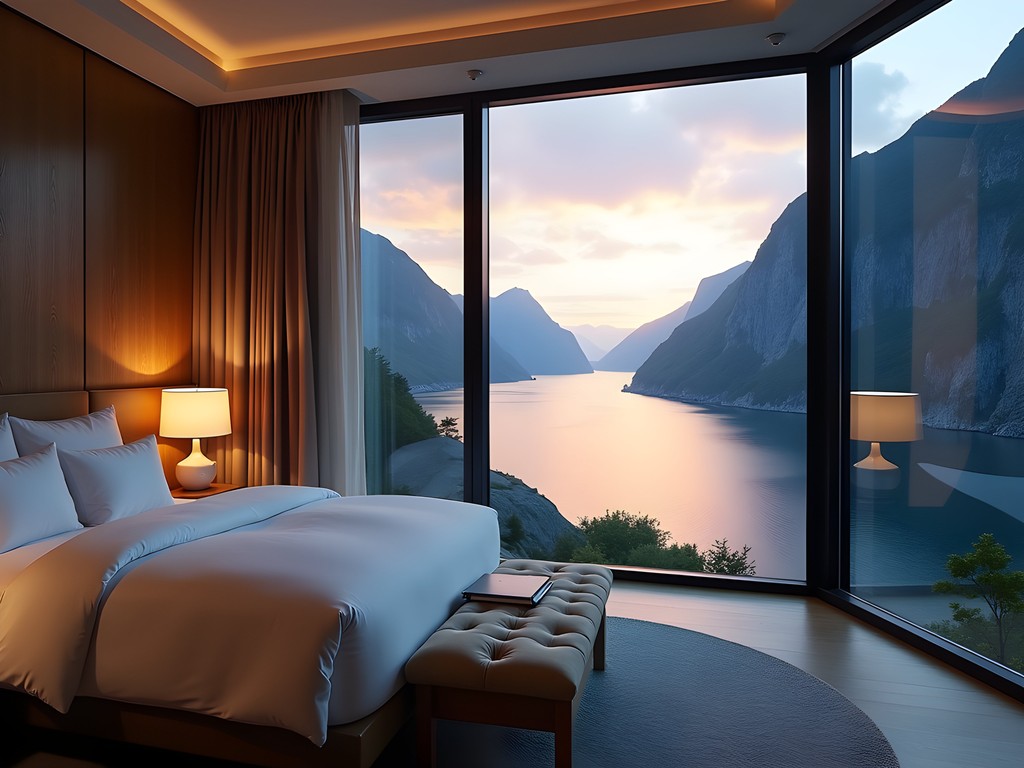
💡 Pro Tips
- Book accommodations on the north-facing side of the fjord for the best light on the Seven Sisters waterfall
- Request a room on a higher floor for cleaner compositional lines
- Many luxury properties offer packed photographer's lunches if you request 24 hours in advance
Golden Hour Magic: Timing Your Shoots for Dramatic Results
The magic of Geiranger lies not just in its topography but in how dramatically it transforms with light. During summer, the extended golden hours (roughly 9-11pm) cast the fjord walls in a honeyed glow that creates extraordinary depth in photographs. I've found that shooting from Ørnesvingen (Eagle's Bend) during this time produces images with almost three-dimensional quality as shadows play across the terraced cliffs.
For those willing to rise before dawn (which comes early in Norwegian summers), the misty blue hour creates ethereal conditions as fog often hugs the water's surface. My weather-resistant headlamp has been invaluable for navigating the trails in pre-dawn darkness, allowing me to set up before the first light breaks.
Midday offers its own challenges and opportunities. The harsh overhead light can create extreme contrasts, but I've embraced this by shooting in black and white to emphasize the dramatic topography. A graduated ND filter has been essential for balancing the bright sky with the darker fjord waters during these challenging lighting conditions.

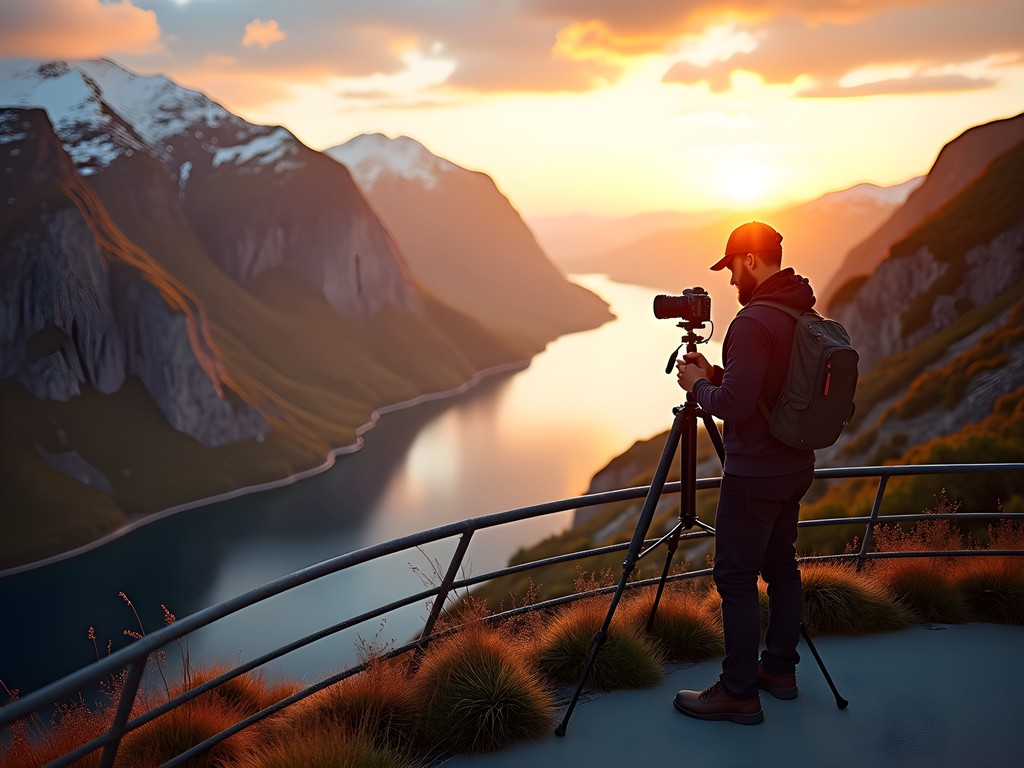
💡 Pro Tips
- Set up at least 30 minutes before official sunrise/sunset times to capture the full color transformation
- Use the PhotoPills app to track the sun's position relative to key landmarks
- Schedule boat tours for midday when you'd otherwise be fighting harsh overhead light
Seasonal Transformations: Why Geiranger Deserves Multiple Visits
While summer brings the classic postcard views of Geiranger, each season offers distinctly different photographic opportunities. My first visit was in peak summer, but I've since returned in early autumn when the hillsides explode with russet and gold foliage, creating a color contrast that makes the blue-green waters pop even more dramatically.
Winter transforms Geiranger into a monochromatic dream, though access becomes more limited as the main road (Eagle Road) often closes. For the adventurous photographer, helicopter tours operate year-round and provide unmatched aerial perspectives. During my February visit, I captured the fjord's frozen waterfalls using a heated photography gloves that allowed precise camera control despite temperatures well below freezing.
Spring offers perhaps the most dynamic shooting conditions as the legendary waterfalls reach peak flow from snowmelt. The Seven Sisters and Suitor falls become thunderous spectacles best captured with a variable ND filter to achieve those silky water effects even in bright conditions. The contrast of roaring waterfalls against the season's first green growth creates compelling visual narratives about nature's renewal.

💡 Pro Tips
- Visit during shoulder seasons (May or September) for fewer tourists in your wide shots
- Winter visits require specialized gear but offer rare compositions of ice-crusted waterfalls
- Spring offers the most dramatic waterfall photography as snowmelt peaks
Beyond the Viewpoints: Hidden Compositions Worth the Hike
While the established viewpoints offer reliable compositions, my most compelling Geiranger images have come from ventures off the beaten path. The Skageflå farm hike delivers perspectives few tourists ever witness. This abandoned mountain farm clings to a ledge 250 meters above the fjord, providing both historical context and unobstructed views of the Seven Sisters waterfall.
The challenging ascent requires proper hiking gear – my trekking poles have saved my knees on the steep descent countless times. I also never make this hike without my waterproof backpack cover as weather changes rapidly, sometimes threatening expensive gear with unexpected downpours.
For those seeking truly unique compositions, consider hiring a local guide to take you to Laushornet peak. This full-day adventure culminates with a 1,600-meter summit offering aerial-like perspectives without the helicopter price tag. I've spent hours at this summit, switching between wide-angle environmental shots and compressed telephoto frames that highlight the fjord's serpentine curves. The physical challenge makes the resulting images all the more satisfying.
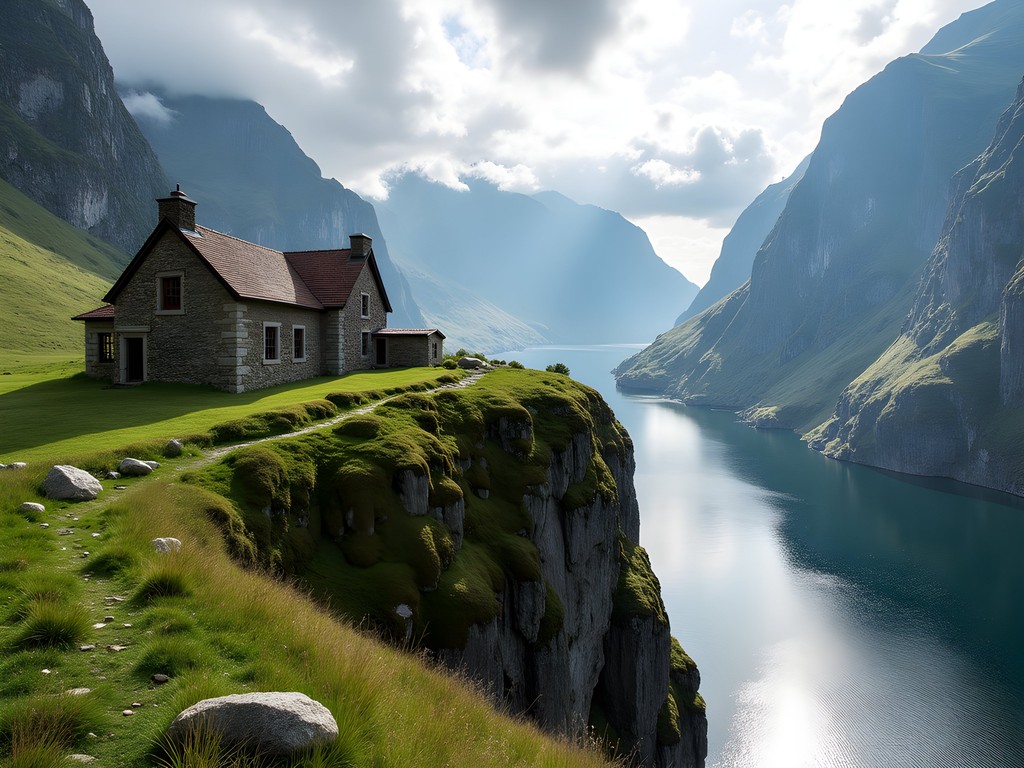
💡 Pro Tips
- Start hikes early to avoid afternoon clouds that often form over the fjord
- Pack microfiber cloths for lens cleaning as waterfall mist is constant near the Seven Sisters
- Use the local shuttle buses to create one-way hiking routes with different photographic perspectives
The Technical Kit: What I Pack for Fjord Photography
Geiranger's varied conditions demand versatile equipment. Beyond my primary camera system, I've refined my supporting gear through multiple visits. My carbon fiber tripod offers the perfect balance of stability and portability for those long hikes to remote viewpoints.
Water protection becomes essential when shooting near the powerful waterfalls or from boats. Rather than changing lenses in these conditions, I typically carry two camera bodies with complementary focal lengths. For quick transitions between shooting positions, my camera harness has been invaluable, allowing hands-free hiking while keeping two cameras accessible.
The fjord's microclimate creates unique challenges – rapidly shifting from bright sunlight to moody mist within minutes. I've found a silica gel dehumidifier essential for overnight gear storage in my hotel room, as the high humidity can affect electronics over a week-long stay.
For those shooting long exposures of waterfalls or night scenes of the fjord under stars, a remote shutter release eliminates camera shake and enables precise timing for those magical moments when cruise ships pass through your composition, providing perfect scale.

💡 Pro Tips
- Bring twice as many batteries as you think you'll need – cold conditions drain them quickly
- Use lens hoods religiously to prevent flare from low-angle light across the water
- A polarizing filter is essential for managing reflections on the fjord's surface
Final Thoughts
As I pack my gear after another week in Geiranger, I feel that familiar reluctance to leave. This UNESCO-protected landscape has become my creative touchstone – a place I return to not just for its obvious beauty, but for how it continues to challenge and inspire my photography with each visit. The luxury accommodations provide the perfect recovery space after long shooting days, while the landscape itself offers an inexhaustible supply of compositions that shift with seasons, weather, and light.
Whether you're capturing the midnight sun casting golden light across the fjord walls in summer or the dramatic storm clouds creating moody atmospherics in autumn, Geiranger rewards those who approach it with patience and technical preparation. As photographers, we're storytellers at heart, and few locations offer as compelling a narrative as this majestic Norwegian fjord carved by ice and time.
I encourage you to experience Geiranger through your own lens – to find your unique perspective on this frequently photographed landscape. The fjord has more secrets to reveal to those willing to venture beyond the established viewpoints, wake before dawn, or hike that extra mile. Your camera will thank you, and the images you create will serve as portals back to this extraordinary place long after you've returned home.
✨ Key Takeaways
- Geiranger offers dramatically different photographic opportunities across all four seasons
- Luxury accommodations provide both comfort and compositional opportunities with fjord views
- The best images come from venturing beyond established viewpoints to find unique perspectives
- Technical preparation is essential given the varied lighting and weather conditions
- Early morning and golden hour provide the most magical lighting conditions for fjord photography
📋 Practical Information
Best Time to Visit
May through September, with June offering longest daylight hours
Budget Estimate
$3,500-5,000 for a week including luxury accommodation
Recommended Duration
5-7 days minimum to experience varied lighting conditions
Difficulty Level
Moderate (Some Viewpoints Require Challenging Hikes)
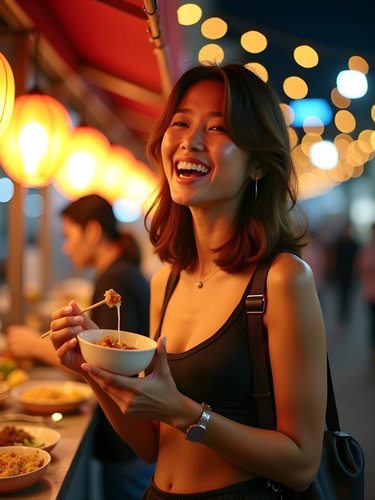
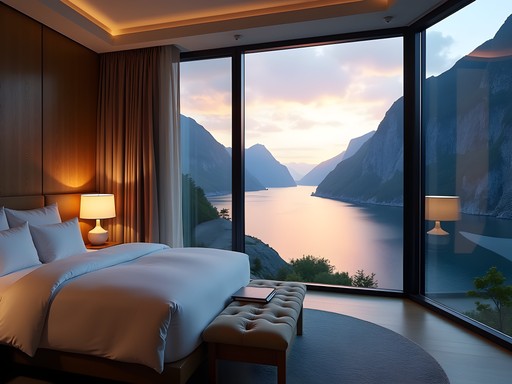

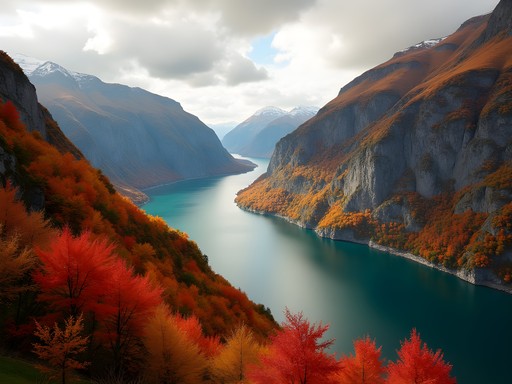




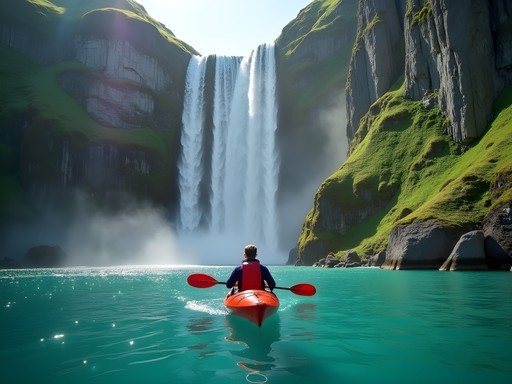






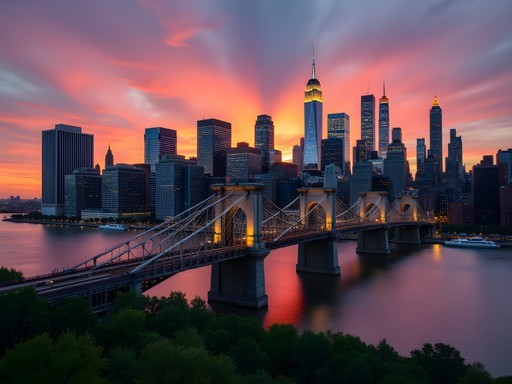
Comments
roamguide
Just got back from Geiranger last week and your post was my bible! Those accommodations with views were worth every penny - waking up to that panorama was insane. We followed your advice about hiking to Skageflå farm for sunset and WOW. The light hitting the abandoned farm with the fjord below was magical. Took us about 2 hours each way from the boat drop-off, but absolutely worth it. Anyone planning a trip should definitely pack good hiking boots - some paths are pretty steep!
photolover
Did you need any special lenses for those fjord shots?
roamguide
I mostly used a wide-angle (16-35mm) for the dramatic landscapes and a 24-70mm for details. Nothing super fancy needed - the scenery does all the work!
George Hayes
Nova, this guide is exactly what I needed! Taking the family to Norway this summer and Geiranger is top of our list. Your section on 'Hidden Compositions Worth the Hike' is gold - we're definitely going to check out those lesser-known viewpoints. My oldest is getting into photography and I just got her beginner DSLR for her birthday. Any specific settings you'd recommend for a 14-year-old trying to capture those dramatic fjord landscapes? The changing light conditions sound challenging!
Nova Lee
That's wonderful, George! For your daughter, I'd suggest starting in aperture priority mode (Av) with f/8-f/11 for good depth of field across the landscape. A polarizing filter will help manage reflections on the water. Most importantly, encourage her to bracket exposures (take multiple shots at different settings) when the light contrast is strong between sky and fjord. Can't wait to see what she captures!
greenseeker
That winter shot with the snow-covered peaks is incredible!
redpro
Amazing post! I'm planning a trip for next summer and wondering if you found spring or summer better for photography? Also, did you have any issues with crowds at the main viewpoints? I'd love to capture those epic landscapes without tons of tourists in my shots!
Nova Lee
Both seasons have their charm! Spring has dramatic waterfalls and fewer crowds, while summer gives you those long golden hours. For popular spots like Flydalsjuvet, try going before 9am or around dinner time when tour buses are gone. Early June is my sweet spot - good weather but before peak crowds.
Megan Martin
Nova, your photography captures the essence of Geiranger perfectly! I visited last summer while researching for a client project and was stunned by how the light plays across the fjord throughout the day. Your tip about shooting from Flydalsjuvet during golden hour is spot on - the shadows create such dramatic depth. Did you get a chance to take the ferry through the fjord? I found some unique angles from the water that complemented the elevated viewpoints nicely.
roamguide
The ferry ride is definitely worth it! We did it last fall and got some amazing reflection shots when the water was calm.
Nova Lee
Thanks Megan! Yes, I took the ferry twice - once at dawn and once at sunset. The perspective from below those towering cliffs gives such a different feeling in the images. Glad you enjoyed your time there too!
photolover
Those sunset shots are absolutely breathtaking! Makes me want to book a trip right now.
Gregory Boyd
Having photographed Geiranger across three seasons now, I can confirm Nova's assessment that each visit offers something completely different. Winter was particularly challenging but rewarding - the fjord takes on an almost monochromatic palette that forces you to think about composition differently. One tip I'd add: the microclimate around the fjord can be unpredictable. I found bringing multiple weather protection options for my gear essential. The hike to Skageflå farm that Nova mentions is indeed spectacular, but be prepared for a solid 2-3 hour trek each way if you're carrying full camera equipment. The abandoned farm buildings against the fjord backdrop make for compelling human interest shots that stand out from the typical landscape portfolio.
Nova Lee
Great insights, Gregory! You're absolutely right about the winter palette - it taught me so much about working with subtle tonal variations. Did you make it to the Storseterfossen waterfall? That's next on my list for my winter return.
Gregory Boyd
I did catch Storseterfossen, but only in summer when you can walk behind it. I imagine it's partially frozen in winter which would create some fascinating ice formations. Just be extremely careful with the trail conditions if you go then - I'd recommend those spike attachments for your boots at minimum.
tripguide
Those winter shots are incredible! Never considered visiting Norway outside of summer before.
vacationphotographer
Heading to Geiranger in October - wondering what lenses you'd recommend for the changing autumn light? Also, any thoughts on that luxury accommodation you mentioned? Worth the splurge?
Nova Lee
For autumn, I'd definitely bring a good wide-angle (16-35mm was my workhorse) and a medium zoom with decent aperture for those golden hour shots. The weather can change quickly, so having a lens that performs well in varied light conditions is key. And YES, Hotel Union is absolutely worth it - waking up to that view changes how you shoot all day!
vacationphotographer
Thanks Nova! Just booked Hotel Union - can't wait. My weather-sealed Sony 16-35 G Master should be perfect then. Any specific viewpoints that are less crowded than Flydalsjuvet?
Nova Lee
Great choice on both the hotel and lens! For less crowded spots, try hiking up to Løsta - it's about 90 minutes from town but gives you a completely different angle on the fjord. Also, the viewpoint at Knuten is magical at sunset and rarely has more than a couple of photographers.
backpackmood
Wow Nova! Your shots of the fjord with that morning mist are absolutely breathtaking! Makes me want to book a flight right now. Did you find it difficult to get clear shots with all the tourists around?
Nova Lee
Thanks so much! The key is getting up SUPER early - I was at Flydalsjuvet by 5am for those misty shots. Most tour buses don't arrive until 10am, so you get a few magical hours to yourself!
backpackmood
5am?! That's dedication! But clearly worth it for those shots. Adding this to my bucket list!
Venture X
Premium card with 2X miles, $300 travel credit, Priority Pass